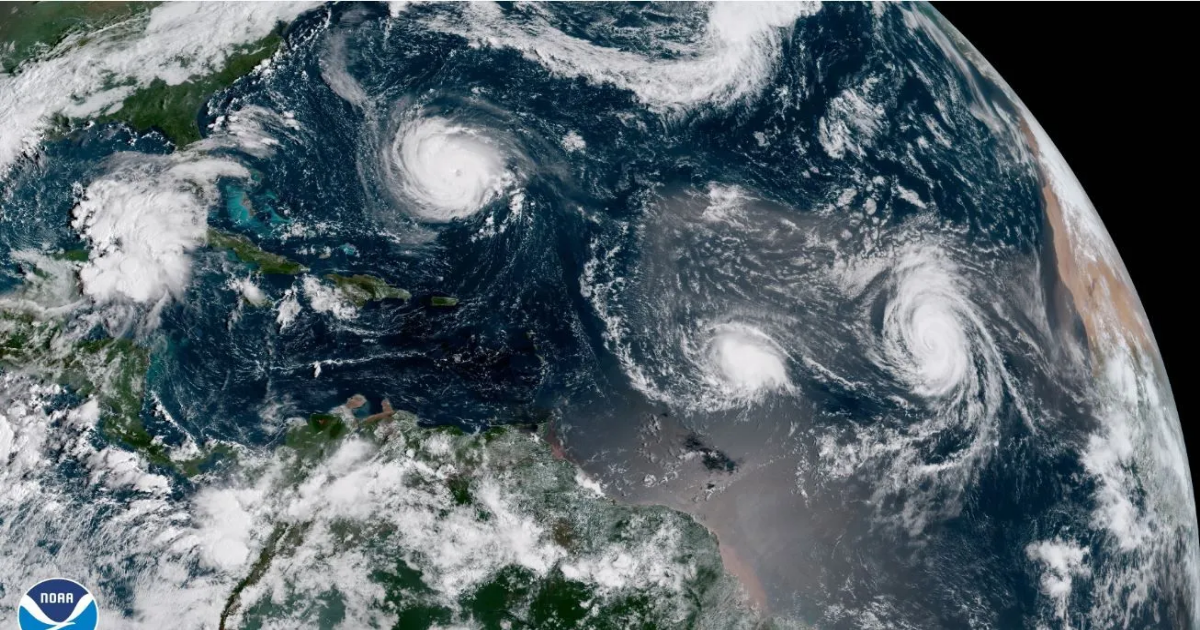
Early forecasts say the 2025 Atlantic hurricane season will bring months of danger for millions of Americans, and the time to prepare starts well before the storms form.
Officials with the National Oceanic and Atmospheric Administration said the most dangerous storms can quickly explode in intensity, so understanding forecasts, hurricane dangers and preparedness should be top-of-mind for residents well before storms start forming.
There’s plenty to learn. (For example, did you know that hurricane hazards extend well beyond the famous “cone of uncertainty“?)
Here’s a primer on what to know as hurricane danger ramps up in 2025.
When does the 2025 Atlantic hurricane season start?
In the Atlantic Basin, which includes storms that form in the Atlantic, the Caribbean Sea and the Gulf of America (formerly known as Gulf of Mexico), hurricane season lasts from June 1 until Nov. 30. In fact, 97% of all tropical cyclones in the Atlantic form during the season.
The peak of the Atlantic season is typically from mid-August until mid-October.
In the eastern Pacific Basin, hurricane season starts on May 15 and lasts until Nov. 30.
Hurricane season forecasts: How many storms are expected?
Federal forecasters on May 22 predicted a 60% chance of an above average season. (A typical year averages about 14 tropical storms, seven of which spin into hurricanes, based on weather records that date from 1991 to 2020.)
Specifically, NOAA is forecasting a range of 13 to 19 total named storms (winds of 39 mph or higher). Of those, 6 to 10 are forecast to become hurricanes (winds of 74 mph or higher), including 3 to 5 major hurricanes (Category 3, 4 or 5; with winds of 111 mph or higher).
Experts from Colorado State University said in their initial forecast released in early April that an active Atlantic hurricane season is likely. They predicted as many as 17 storms.
Of those 17 storms, researchers said that nine will become hurricanes.
A forecast from AccuWeather, which also came out in April, called for 13-18 named storms, of which 7-10 will be hurricanes.
Last year, 18 storms formed, including devastating Hurricanes Helene and Milton.
What state has the most hurricanes?
Florida, by a wide margin. Since accurate hurricane records began in 1851, more than 120 hurricanes have made landfall in the state of Florida. Texas is second, with 66 hits.
And according to NOAA, 40% of all U.S. hurricanes have hit Florida.
How can you prepare for hurricane season?
- Check with your local government to see if you live in an evacuation zone.
- Have a plan for where you would go if you need to evacuate and share that plan with friends or loved ones. Plan to travel only as far as you need to.
- Write a family emergency plan with your family and/or close friends to decide how you would contact each other in an emergency, where you will go and what you will do. Keep copies on your phone, in your emergency supplies and share with family.
- Put together a basic emergency kit, with water and shelf stable foods for up to a week, flash lights, back up batteries, a first aid kit and moist towelettes.
- Review your insurance policies to ensure if you have adequate coverage, including flood coverage.
- Store insurance policies, photos of your home and its contents and other important papers in a safe place, in electronic files and/or share copies with family members.
- For more suggestions, visit NOAA’s hurricane preparations page.
What are the costliest hurricanes in U.S. history?
According to NOAA, for all United States hurricanes, Hurricane Katrina (2005, $201.3 billion) is the costliest storm on record.
Hurricane Harvey (2017, $160.0 billion) ranks second, Hurricane Ian (2022, $119.6 billion) ranks third, Hurricane Maria (2017, $115.2 billion) ranks fourth, and Hurricane Sandy (2012, $88.5 billion) ranks fifth.
What is rapid intensification?
A rapid strengthening of a hurricane, when wind speeds increase by at least 35 mph in 24 hours.
It occurs when a tropical storm or hurricane encounters an extremely conducive environment for strengthening, according to Colorado State University hurricane researcher Phil Klotzbach. That environment consists of very warm water, low vertical wind shear and high levels of midlevel moisture.
What is storm surge?
Storm surge, the massive amount of water that builds up and comes ashore during a hurricane, is often the deadliest and most destructive threat from these storms.
It is characterized by water being pushed toward the shore by the force of the winds moving around the storm, NOAA said.
Storm surge has accounted for about half of all the deaths in hurricanes since 1970, according to the National Hurricane Center. It caused most of the 1,800 deaths in Hurricane Katrina in 2005.
What are the hurricane names for 2025?
- Andrea
- Barry
- Chantal
- Dexter
- Erin
- Fernand
- Gabrielle
- Humberto
- Imelda
- Jerry
- Karen
- Lorenzo
- Melissa
- Nestor
- Olga
- Pablo
- Rebekah
- Sebastian
- Tanya
- Van
- Wendy
